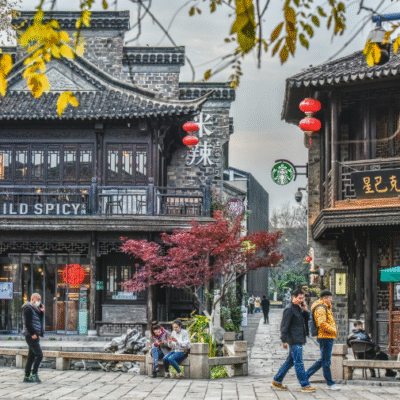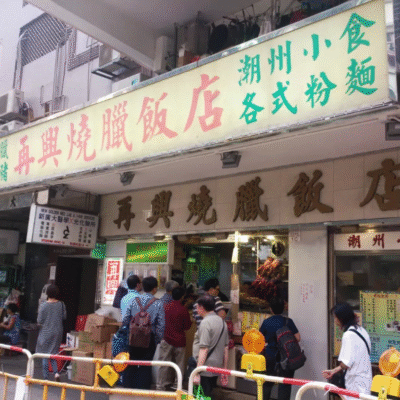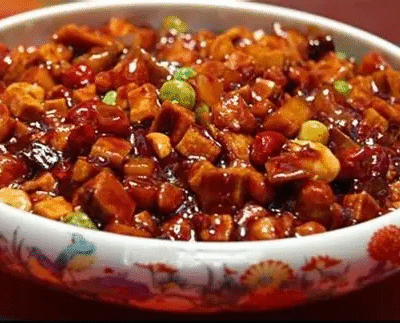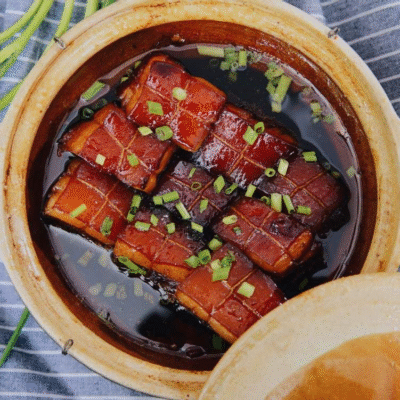Peking Duck is a beloved delicacy that enjoys great popularity among foreigners. This may be partly due to cultural habits—historically, people in Western countries have generally regarded duck meat as a tasty treat.
In contrast, some other types of Chinese meat, such as dog meat, are much harder for foreigners to accept. According to statistics, the search popularity for Peking Duck is very high, which clearly shows how much people admire this dish. Now, let’s take a closer look at this famous culinary delight.
Brief History of Peking Duck

The origins of Peking Duck can be traced back to the 13th century during China’s Yuan Dynasty, when the imperial court already had methods for roasting goose that were similar. Later, during the Ming and Qing Dynasties, Peking Duck gradually developed its unique flavor and preparation techniques, especially being perfected in the imperial kitchens of Beijing.
What Makes Peking Duck Delicious?
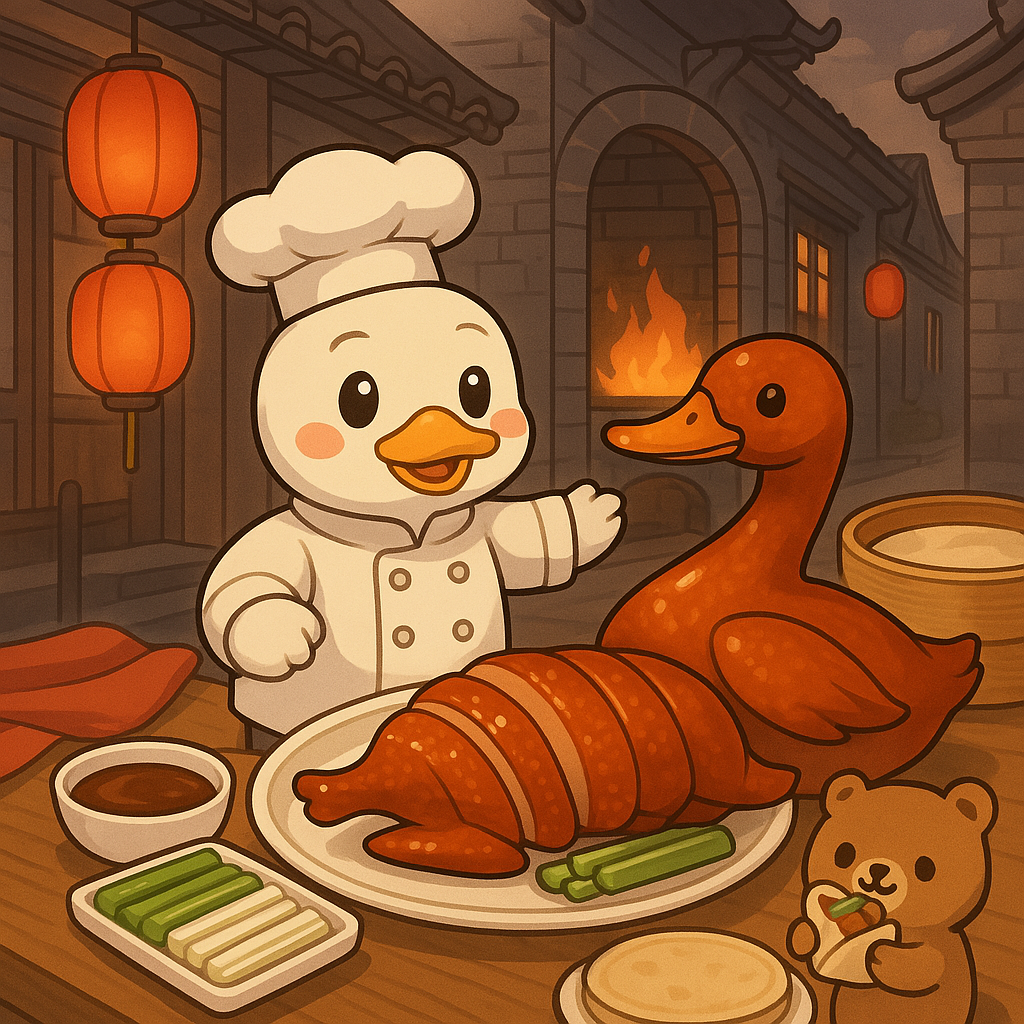
The deliciousness of Peking Duck comes from using high-quality Pekin ducks as the main ingredient, which are specially air-dried and roasted in a hanging oven. This process gives the duck a golden, crispy skin and tender, juicy meat. It is traditionally served with shredded scallions, cucumber sticks, and sweet bean sauce, all wrapped in a thin pancake. When eaten together, the flavors create an incredibly tasty experience.
Famous Restaurants for Peking Duck in Beijing
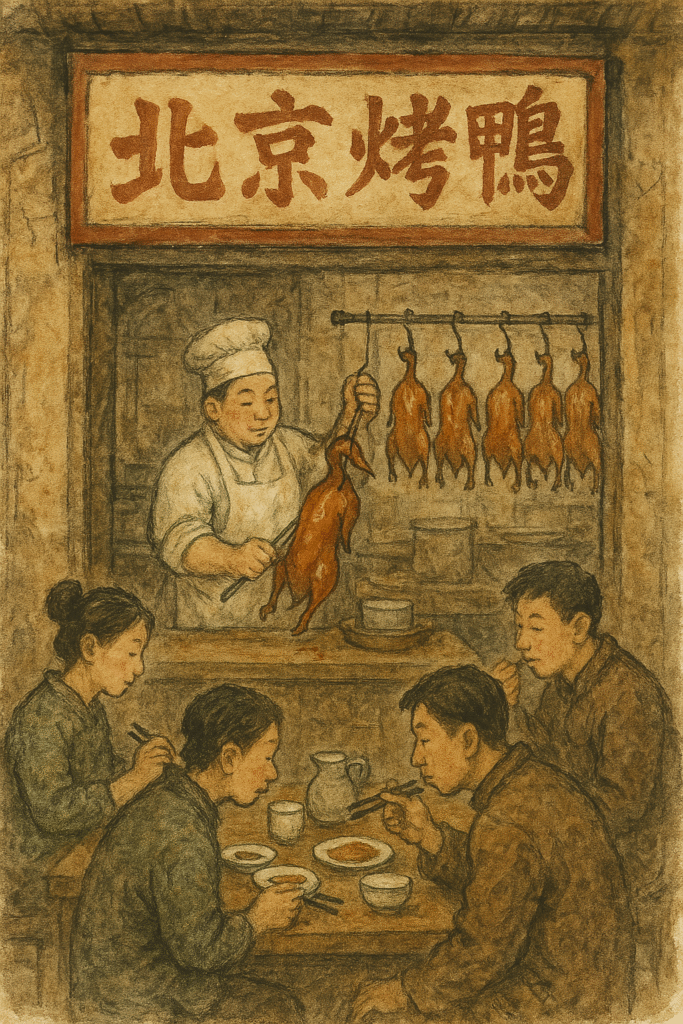
If you want to taste authentic Peking duck, it is still recommended that you visit Beijing in person. The unique local preparation methods in Beijing are different from those in other places, and only here can you experience the most genuine flavor.
While exploring the city’s many famous attractions, you can easily enjoy this renowned delicacy. For example, there are several well-known Peking duck restaurants near the Forbidden City in Beijing, making it very convenient to stop by and have a taste. I have listed some of the most famous Peking duck restaurants below:
| Area | Representative Restaurant | Highlights | Average Price (CNY) |
|---|---|---|---|
| Near Qianmen Street | Quanjude | Traditional classic Peking Duck | 150–250 RMB |
| Near Qianmen Street | Bianyifang | Historic, traditional roast duck | 130–220 RMB |
| Wangfujing District | Da Dong | High-end roast duck, innovative dishes | 200–350 RMB |
| Hepingli, Dongcheng District | Da Dong (Flagship) | Refined roast duck, modern style | 250–400 RMB |
| Financial Street, Xicheng District | Various chain outlets | Consistent quality, convenient | 120–200 RMB |
How to Eat Peking Duck
Step 1: Observe the Slicing
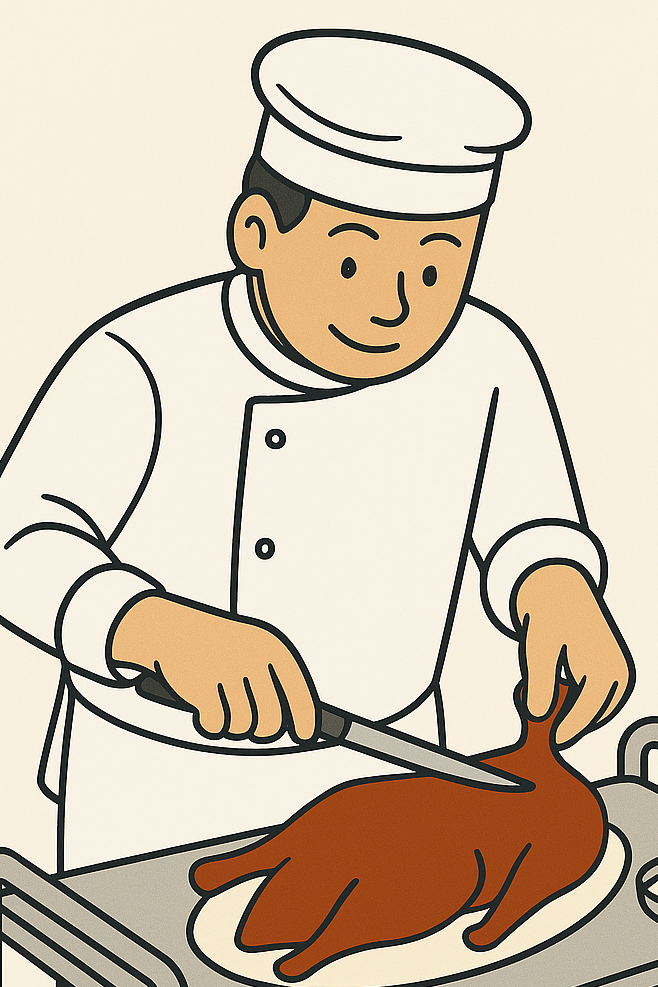
The server will bring the roast duck to your table and carve it on the spot. The crispy skin and the tender meat are sliced separately to highlight the contrast in texture. In some restaurants, the crispiest pieces of duck skin are served first and dipped in white sugar—this is a traditional Beijing way of eating.
Step 2: Pair with Pancakes
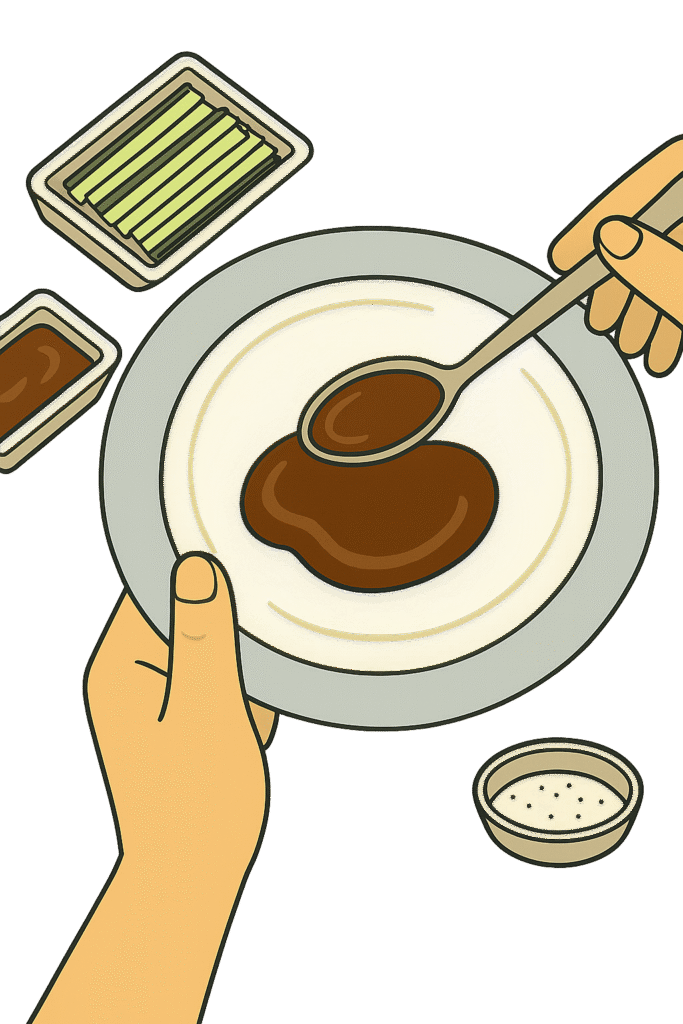
The restaurant will provide paper-thin pancakes, often called lotus leaf pancakes, which are soft, thin, and slightly chewy. These delicate pancakes serve as the perfect wrap to hold the crispy duck skin, tender meat, sauce, and fresh vegetables together, allowing you to enjoy every bite in a convenient handheld roll.
Step 3: Spread the Sauce

Spread a generous layer of sweet bean sauce evenly on the pancake to add a rich, savory sweetness that complements the duck.
In some restaurants, you might also find alternatives like yellow soybean paste or mashed garlic sauce, which provide different flavor profiles—from earthy and salty to pungent and aromatic—allowing you to customize your taste experience.
Step 4: Add Garnishes + Step 5: Add the Duck

Place some shredded scallions, cucumber strips, or radish sticks evenly on top of the pancake. These fresh garnishes add a crisp, refreshing texture that balances the richness of the duck, enhancing the overall flavor and making each bite more vibrant and enjoyable.
Step 6: Wrap It Up

Fold or roll the pancake into a small, neat wrap that fits comfortably in your hand. This makes it easy to hold and eat without making a mess, allowing you to enjoy the perfect combination of crispy duck, savory sauce, and fresh vegetables in every bite.
Step 7: Enjoy
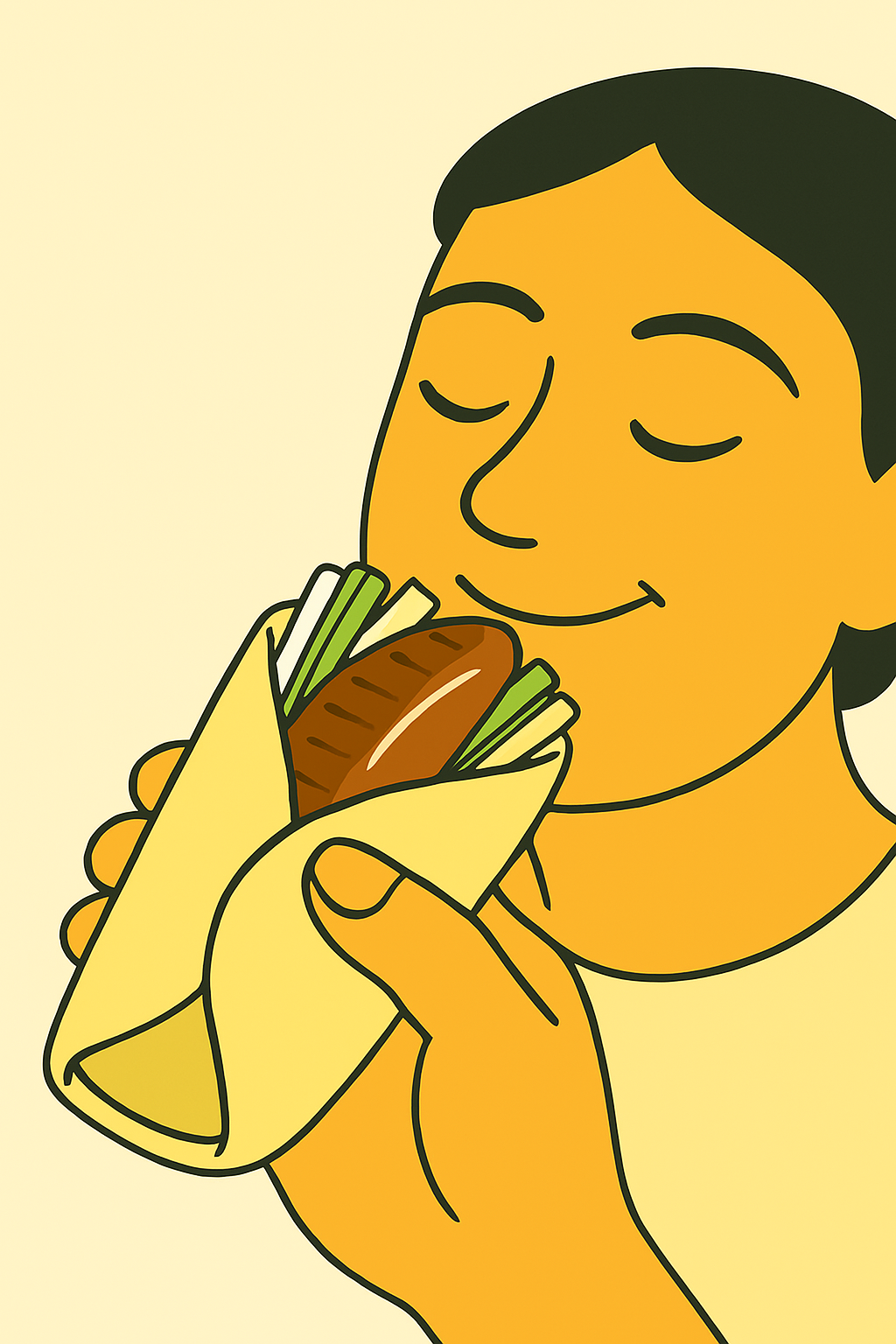
Take a bite and savor the rich combination of crispy duck skin, tender meat, the sweet-salty sauce, and the refreshing crunch of the vegetables.
In Conclusion
In contrast to other traditional Chinese meats that may seem unusual to foreign palates, Peking Duck has earned widespread appreciation around the world. Its golden crispy skin, tender meat, and rich cultural heritage continue to captivate diners everywhere. Whether you are a seasoned foodie or simply curious to explore authentic Chinese cuisine, tasting Peking Duck is an unforgettable experience that perfectly embodies the artistry of Chinese cooking. So next time you visit Beijing—or find a renowned Chinese restaurant closer to home—don’t miss the chance to savor this iconic dish.

